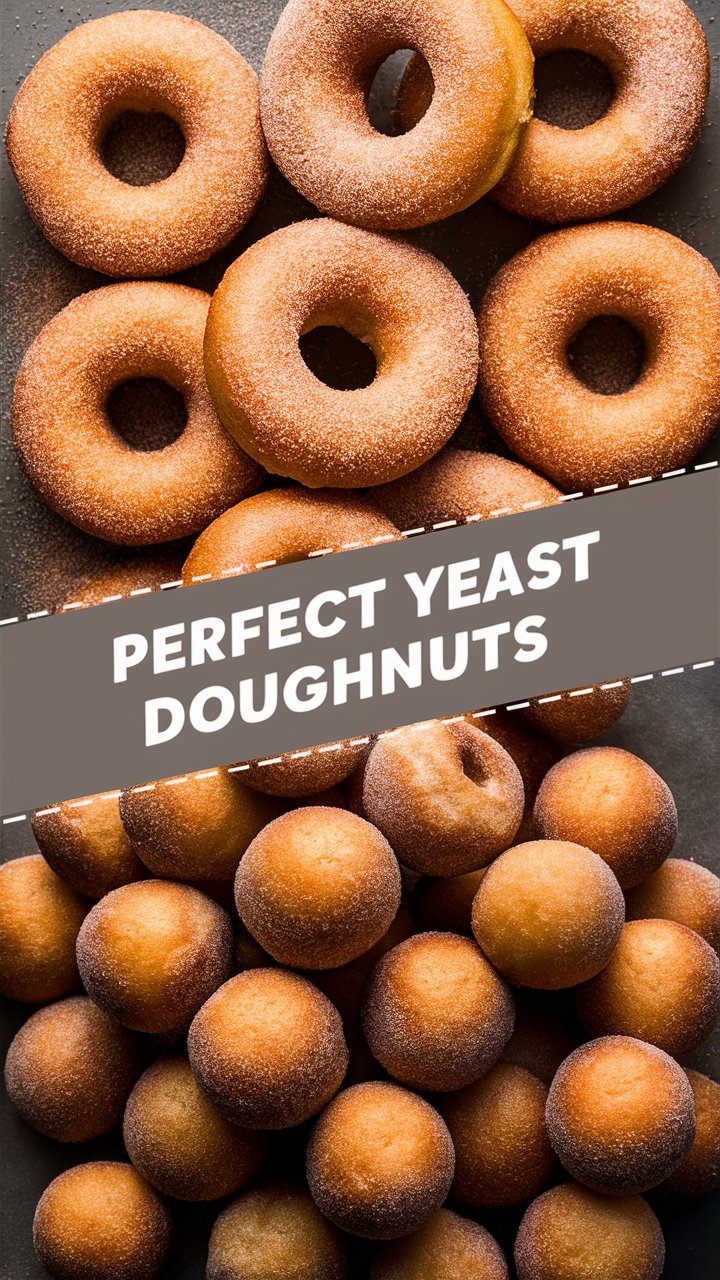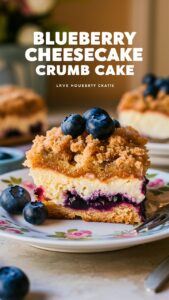Light, airy, and perfectly golden—yeast doughnuts are the secret to that soft, pillowy, bakery-style texture everyone craves. If your past attempts turned out too dense, oily, or flat, this expertly curated, step-by-step guide will walk you through every detail, from choosing the right yeast to achieving the ideal rise and frying temperature. Get ready to create professional-quality donuts at home that are soft inside, crisp outside, and irresistibly glazed or sugar-dusted.
📌 Table of Contents
- What Makes Yeast Doughnuts Special?
- Ingredients Breakdown (With Purpose & Substitutes)
- Perfect Yeast Doughnuts Recipe (Step-by-Step)
- Expert Secrets to Achieve Fluffy Perfection
- Troubleshooting Common Problems
- Flavor Variations & Filling Ideas
- Glazing & Coating Options
- Storage, Freezing & Reheating Guide
- Nutrition Info (Per Serving)
- Frequently Asked Questions (SEO Optimized)
- Final Tips & Call to Action
🥯 What Makes Yeast Doughnuts Special?
Unlike cake doughnuts, which rely on baking powder, yeast doughnuts rise slowly, creating a stretchy gluten structure that results in a soft, airy inside and a slightly crisp exterior. They’re ideal for filling, glazing, or classic sugar coating—just like your favorite bakery or donut shop.

🧪 Ingredient Breakdown: Science & Substitutions
| Ingredient | Purpose | Substitutes / Notes |
|---|---|---|
| All-purpose flour | Structure + gluten network | Bread flour for chewier texture |
| Active dry / instant yeast | Leavening (rising) | Fresh yeast (double the weight) |
| Milk (warm) | Moisture + softness | Any dairy-free milk (almond, oat) |
| Sugar | Feeds yeast + sweetness | Brown sugar or coconut sugar |
| Eggs | Richness + binding | Use 1 tbsp yogurt per egg for egg-free |
| Butter (softened) | Tender, rich dough | Margarine or vegan butter |
| Salt | Enhances flavor | Never skip—essential |
| Oil for frying | Ensures crisp exterior | Use canola, sunflower, or vegetable oil |
📝 Perfect Yeast Doughnuts Recipe (Step-by-Step)
📍 Yield: 12–15 doughnuts
📍 Prep Time: 20 mins (plus rise time)
📍 Fry Time: 2–3 mins per side per doughnut
✅ Ingredients:
- 3 ½ cups (440g) all-purpose flour
- 2 ¼ tsp (7g) instant or active dry yeast
- ¾ cup (180ml) warm milk (not hot—about 110°F/43°C)
- ¼ cup (50g) granulated sugar
- 2 large eggs (room temp)
- ¼ cup (60g) softened unsalted butter
- ½ tsp salt
- Oil for frying (about 1 liter)
✅ Step-by-Step Instructions:
🥣 Step 1: Activate Yeast (If Using Active Dry)
- Mix warm milk, sugar, and yeast.
- Let it rest for 5–10 minutes until frothy.
(If using instant yeast, add directly to flour.)
🧑🍳 Step 2: Make the Dough
- In a bowl, combine flour and salt.
- Add yeast mixture (or instant yeast), eggs, and softened butter.
- Mix until dough forms.
✋ Step 3: Knead to Perfection
- Knead for 8–10 minutes until dough is smooth, elastic, and slightly tacky (not sticky).
📦 Step 4: First Rise (Proof)
- Place dough in a lightly greased bowl, cover with plastic wrap or cloth.
- Let rise in a warm place for 1–1.5 hours until doubled.
🍩 Step 5: Shape Doughnuts
- Roll dough to ½-inch (1.2 cm) thickness.
- Cut circles using a donut cutter or two round cutters.
- Place on parchment for second rise.
⏳ Step 6: Second Rise (Proofing Again)
- Rest doughnuts for 30–45 minutes until puffy (pass the “poke test”: dough slowly springs back).
🔥 Step 7: Fry Perfectly
- Heat oil to 350°F (175°C).
- Fry 2–3 doughnuts at a time.
- Cook 1–2 minutes per side until golden.
🍭 Step 8: Coat or Glaze Immediately
- Roll in sugar or dip in warm glaze while still warm.

⭐ Expert Bakery Tips (Secret to Fluffy Doughnuts)
✅ Maintain oil temperature strictly between 350–375°F (175–190°C)
✅ If doughnuts sink flat, second rise was too long
✅ Light poke test ensures correct proofing
✅ Avoid adding too much flour—slightly tacky dough = perfect texture
✅ Fry one test doughnut first to check time & texture
❌ Troubleshooting Table
| Problem | Cause | Solution |
|---|---|---|
| Dense doughnuts | Under-kneaded or under-proofed | Knead 10 min; ensure doubling |
| Greasy texture | Oil too cold | Keep oil at 350°F |
| Too dark outside, raw inside | Oil too hot | Lower temperature |
| Flat doughnuts | Over-proofed | Reduce second rise time |
🎨 Flavor Variations
| Type | Description |
|---|---|
| Classic Sugar | Roll in fine sugar |
| Chocolate Glaze | Dip in melted chocolate |
| Jam Filled | Inject strawberry/raspberry jam |
| Custard Cream | Fill with pastry cream |
| Nutella/Biscoff | Pipe inside for rich flavor |
🍯 Glazing & Coating Ideas
✅ Vanilla glaze (powdered sugar + milk + vanilla)
✅ Chocolate ganache
✅ Cinnamon sugar mix
✅ Maple glaze
✅ Caramel drizzle
📦 Storage & Freezing
| Storage Method | Duration | Notes |
|---|---|---|
| Room temp | 1–2 days | Store in airtight container |
| Refrigerated | Up to 4 days | Reheat before serving |
| Frozen (fried) | 2 months | Reheat in air fryer or oven |
| Frozen (raw dough) | 1 month | Thaw, rise, then fry |

📊 Nutrition (Approx per doughnut without glaze)
Calories: ~230 kcal | Protein: 4g | Fat: 8g | Carbs: 35g
❓ Frequently Asked Questions (People Also Ask Optimized)
1. Can I bake yeast doughnuts instead of frying?
They can be baked at 350°F (175°C) for 10–12 minutes, but texture will be more like brioche buns than classic donuts.
2. Why didn’t my dough rise?
Possible reasons include expired yeast, cold environment, or too hot liquid killing yeast.
3. Can I make the dough overnight?
Yes! Refrigerate after first rise and continue shaping the next day.
✅ Final Thoughts
With the right yeast activation, proper proofing, precise frying temperature, and expert shaping techniques, you can create flawless, light, golden yeast doughnuts right at home that rival any bakery. Try this recipe, experiment with flavors, and let your creativity shine.





